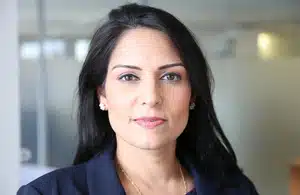New scientific methods for assessing the age of asylum seekers have been introduced by the government.
The reforms will bring the UK’s age checking policy in line with other countries. Scientific methods are used by most European countries, who primarily use X-ray scans, and sometimes CT scans and MRI imaging to view key parts of the body.
The changes have been made to ensure that children seeking asylum access the support and services they require while ending an abuse of the system where adults masquerade as teenagers to enable them support to which they would otherwise not be entitled.
Home Secretary Priti Patel said: “The Nationality and Borders Bill will end many of the blatant abuses that have led to our immigration and asylum system being abused by those with no right to be in our country.
“The practice of single grown adult men, masquerading as children claiming asylum is an appalling abuse of our system which we will end. By posing as children, these adult men go on to access children’s services and schools through deception and deceit; putting children and young adults in school and care at risk.
“It is a fact that two thirds of age dispute cases have found that the individual claiming to be a child is actually over the age of 18. I have given more resources and support to local councils to ensure that they apply vigorous and robust tests to check the ages of migrants to stop adult men being automatically classified as children,” she added.
A committee comprising medical practitioners, academics, scientists and social workers, has been established to look at a range of scientific methods for estimating age, and will be considering their accuracy and reliability, as well as ethical and medical issues. The committee will report their findings directly to the Home Office Chief Scientific Adviser to support her in advising Ministers on appropriate scientific methods for age estimation.
Pro-Vice Chancellor for Engagement at Lancaster University Professor Dame Sue Black has been appointed to chair the committee on an interim basis. She is one of the world’s leading forensic anthropologists and is the current President of the Royal Anthropological Institute. A permanent appointment will be made in due course.
In Finland and Norway, radiographs are taken to examine the development of teeth and the fusion of bones in the wrist. In both countries, two certified experts will carry out the age assessment and must jointly agree on the person’s age. In France, X-rays are taken to examine the fusion of the collar bone, alongside dental and wrist X-rays, while in Greece, dental X-rays are used alongside social worker assessments.
Many of those arriving in the UK who claim to be children understandably do not have clear evidence, such as a passport, to prove their age. This can result in some people trying to claim they are younger than they are, in order to receive asylum or refugee status in the UK.
The issue of adults pretending to be children when claiming asylum is a significant challenge which undermines the public’s confidence in the asylum system as well as posing safeguarding risks to actual asylum seeking children. In the 12 months up to September 2021, of the 1,696 resolved age dispute cases in which an individual’s claim to be a child is disputed, around two thirds were found to be adults.
Resolving such age disputes is currently very time consuming, challenging and expensive for local authorities and the government. It also often relies primarily on interviews with social workers and, given it is not always combined with scientific evidence, can be subjective, often resulting in expensive legal challenges. These can cost councils hundreds of thousands of pounds and can take as long as three years to resolve.
Recent examples of where age assessment has gone wrong has resulted in adults being put into children’s schools, or children being treated as adults, in both cases putting children at risk of harm.
Other new measures on age assessment include:
- Establishing a National Age Assessment Board with expert social workers who can conduct an age assessment on behalf of a local authority. This will be a centralised team within the Home Office that local authorities can use if they do not want to conduct their own age assessments
- Outlining which scientific methods those making age assessments, such as the National Age Assessment Board or local authorities, should use to lead to more informed decisions.
- Creating a new right of appeal, which will provide a quicker and cheaper way to resolve legal disputes.
The Nationality and Borders Bill was debated in the House of Lords on 5 January.



